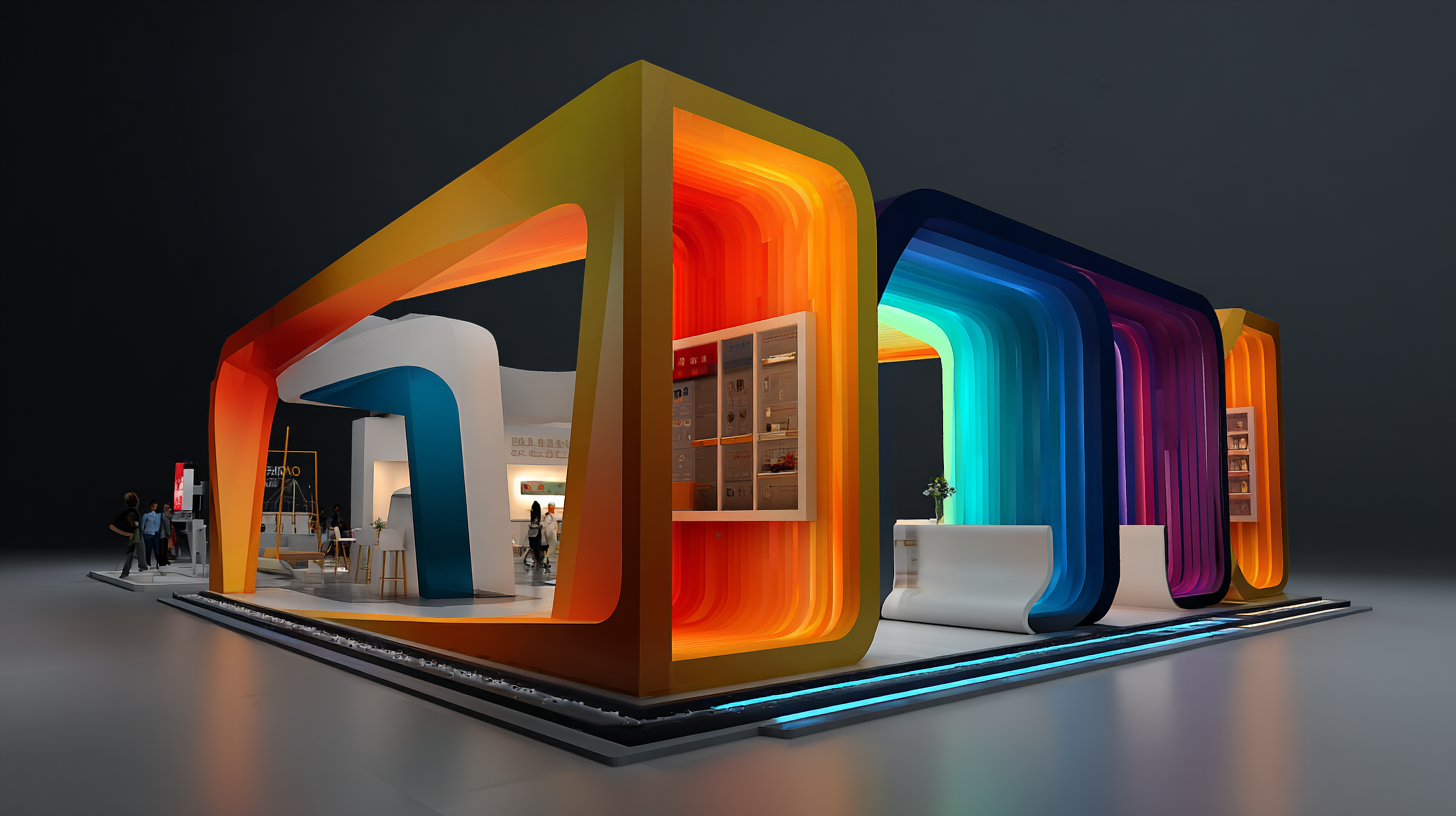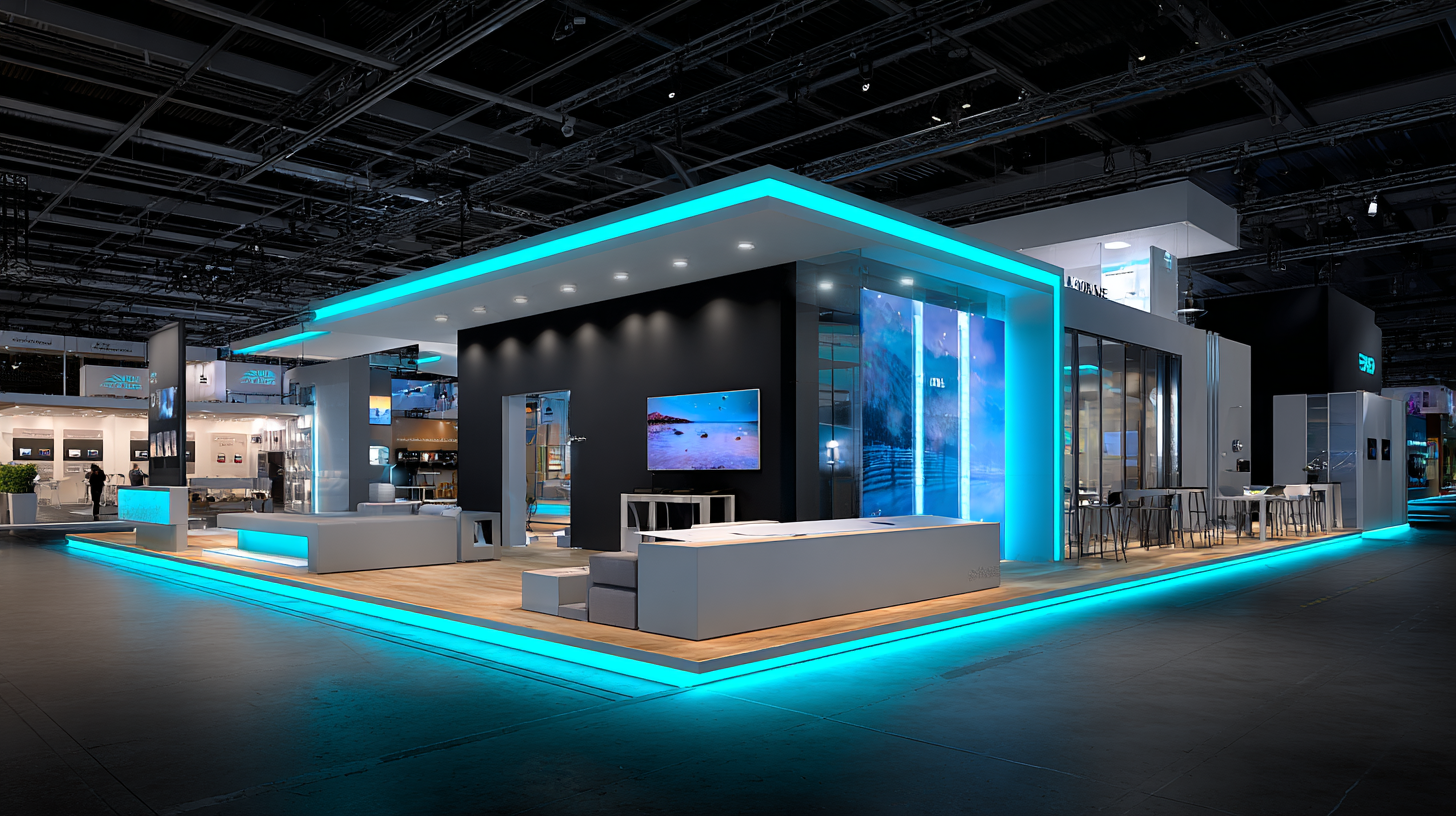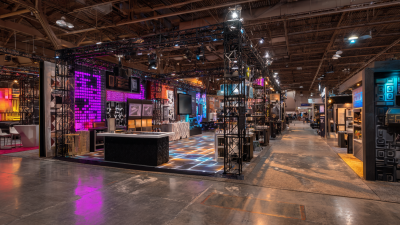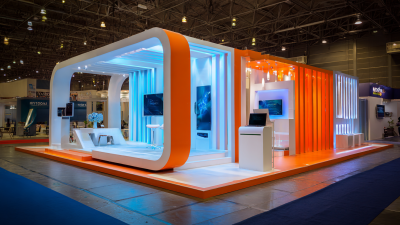
In today’s competitive landscape, the significance of effective Exhibition Design Stand strategies cannot be overstated, as research indicates that 65% of attendees are influenced by the design and layout of the exhibition space. Effective design not only captivates potential visitors but also fosters deeper engagement and a memorable experience. According to a report by the Event Marketing Institute, 84% of participants in trade shows and exhibitions cite them as an impactful method of learning about new products and services.

With advancements in technology and an increasing emphasis on interactivity, the future of exhibition design is increasingly focused on integrating innovative features that enhance visitor engagement. This article delves into cutting-edge strategies for Exhibition Design Stand that can significantly elevate the visitor experience, illustrating how well-executed design can transform a simple booth into an immersive environment that resonates with audiences long after the event concludes.
The integration of multisensory elements in exhibition design has proven to be a powerful strategy for enhancing visitor engagement and creating memorable experiences. Recent installations, such as the one curated by MFA student Emily Tonnos, highlight how the interplay of sensory stimuli can evoke deep emotional responses. Tonnos’ work, “Embodiment,” not only explores the variability of human emotions but encapsulates the essence of joy, showcasing how art can stimulate multiple senses—sight, sound, touch, and even smell—inviting viewers into a more immersive narrative.

Furthermore, the growing trend of incorporating gamification into museum experiences suggests that the use of sensory elements can extend beyond aesthetics to include interactive and participatory features. As seen in the innovative exhibition spaces emerging across the globe, including the immersive art venue set to debut in Abu Dhabi and the London Museum’s use of rediscovered spaces, these environments encourage visitors to engage in a dialogue with the exhibit. This multisensory approach not only enriches the experience but also fosters a deeper connection between the visitor and the cultural narratives being presented, ultimately transforming the way we interact with art and heritage.
Augmented reality (AR) is revolutionizing visitor interactions within exhibitions, creating immersive experiences that draw individuals into the narrative of the displays. Recent advancements in digital technology have allowed museums to transcend traditional presentation methods, engaging audiences in dynamic ways through AR. For instance, exhibits are now able to come alive with interactive elements that users can manipulate, turning passive observations into active participation. This not only sustains interest but also deepens understanding, as visitors can visualize complex concepts and historical contexts in real-time.
As exemplified by the National Museum in Prague, the integration of AR technologies into exhibitions has demonstrated profound potential. Visitors can engage with life-sized holograms of ancient creatures, contextualizing their significance in a vivid manner. Such technological enhancements redefine the exhibition landscape, enabling institutions to curate experiences that resonate on a personal level while also attracting a tech-savvy audience. By leveraging these tools, exhibition designers can craft standout strategies that not only enhance visitor engagement but also elevate the overall experience within the cultural realm.
In today's competitive exhibition landscape, creating personal connections with visitors is essential for enhancing their overall experience. Customization strategies play a pivotal role in achieving this goal. By tailoring exhibition elements to resonate with individual preferences, organizers can foster a more engaging environment. For instance, interactive digital displays that allow visitors to input their interests and receive personalized content or recommendations can significantly elevate their experience. This approach not only captivates attention but also encourages deeper interactions with the exhibited materials.
Furthermore, incorporating user-generated content into the exhibition can enhance the sense of personal investment. By inviting visitors to share their stories or experiences related to the theme of the exhibition, organizers can create a dynamic and evolving narrative that involves attendees emotionally. This peer-to-peer connection enhances engagement, making visitors feel like active contributors rather than passive observers. By emphasizing personalization and participatory elements, exhibitions can forge meaningful connections that resonate long after the event concludes.
In today's competitive exhibition landscape, measuring visitor engagement is crucial for enhancing experiences. Key performance indicators (KPIs) play a pivotal role in this measurement. Metrics such as visitor retention rate, dwell time, and interaction frequency can provide insights into how effectively an exhibition captivates its audience. The rise of data-driven decision-making underlines the importance of analyzing these indicators to tailor exhibitions that resonate with visitors.
Tips for measuring engagement include utilizing technology to track visitor movements through heat maps and mobile apps, which can reveal popular areas and displays. Incorporating feedback mechanisms, such as post-exhibition surveys, allows organizers to assess visitor satisfaction and gather suggestions for future improvements. Additionally, tracking social media engagement related to the event—like shares, comments, and hashtags—can complement traditional metrics and give a broader picture of an exhibition's impact.
Furthermore, aligning exhibition goals with measurable outcomes is essential. For example, focusing on increasing visitor interaction rates by 15% year-over-year or aiming for a 20% growth in social media mentions can provide clear targets. Regularly reviewing these KPIs not only helps in refining strategies but also enhances the overall visitor experience, driving long-term success for future exhibitions.

In recent years, the integration of sustainable practices in exhibition design has become a crucial factor in attracting modern audiences. According to a report by the Global Data Group, 70% of consumers globally prefer brands that adopt environmentally friendly practices. This shift in consumer preference reveals an increasing expectation for businesses to exhibit a commitment to sustainability, prompting exhibition designers to reimagine their approaches by incorporating eco-friendly materials and designs.
Utilizing sustainable materials, such as recycled plastics or sustainably sourced wood, not only minimizes the ecological footprint of exhibitions but also enhances the aesthetic appeal, resonating with eco-conscious visitors. A study from the Exhibition and Event Association found that exhibitions showcasing sustainable designs experienced a 25% increase in visitor engagement compared to traditional setups. Furthermore, creating immersive experiences that emphasize sustainability can foster deeper connections with audiences, ultimately leading to longer visits and increased brand loyalty. By embracing these innovative design strategies, businesses can effectively engage modern audiences while championing sustainability in the exhibition space.
| Strategy | Description | Visitor Engagement Benefits | Eco-Friendly Practices |
|---|---|---|---|
| Interactive Displays | Utilizing touch screens and VR experiences to engage visitors. | Increases time spent at the stand and enhances learning. | Using sustainable technology to minimize energy consumption. |
| Sustainable Materials | Designing stands with recycled and biodegradable materials. | Attracts environmentally-conscious visitors. | Reduces waste and environmental impact. |
| Engaging Storytelling | Creating a narrative around the brand through displays and presentations. | Enhances emotional connection with visitors. | Utilizing digital signage to cut down on printed materials. |
| Networking Zones | Creating comfortable areas for visitors to meet and interact. | Encourages collaboration and discussion among attendees. | Incorporating furniture made from sustainable materials. |
| Gamification | Introducing games that allow visitors to engage with the content interactively. | Increases participation and fun for visitors. | Using digital platforms to host games rather than physical giveaways. |






